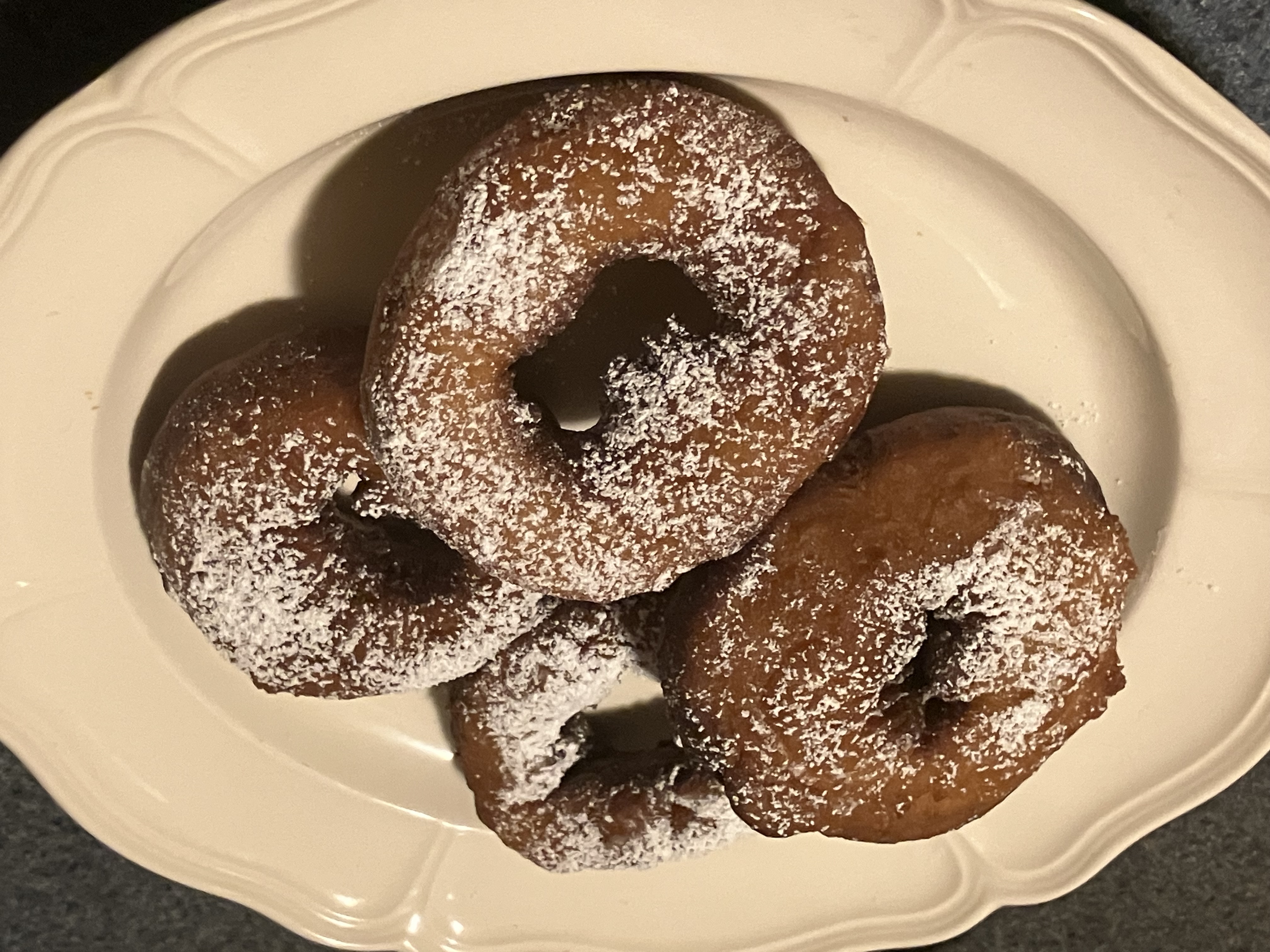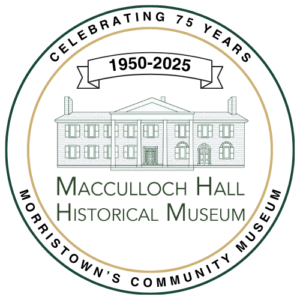The handwritten Macculloch family cookbook contains two recipes for doughnuts. Both recipes are found in the first pages of the book, so presumably were written by one of the earlier generations of Maccullochs. The recipe shared below uses both yeast and mashed potatoes. The recipe also mentions the sponge method of proofing dough. In baking, the “sponge” is more often associated with sourdough bread but can also be used with other baked goods, including doughnut making. The sponge method in baking allows for a longer fermentation time which adds flavor and texture. In the adapted recipe, I did not use the sponge method but followed the directions for active dry yeast.
Potato doughnuts are believed to have originated with German immigrants bringing their cultural traditions to the United States. There is evidence that a potato doughnut recipe was published in several newspapers in 1877, but homemade potato doughnuts did not become popular until the early 20th century. Potato doughnuts, also known as spudnuts, really took off after brothers Al and Bob Pelton opened their first Spudnut shop in Salt Lake City, Utah in 1948. By the 1960s there were over 600 Spudnut locations in the United States, selling over 400,000 spudnuts per day. Don’t worry, there has been a resurgence in potato doughnut popularity and Spudnut bakeries can be found in several states including Illinois, Arkansas, Florida, and Utah. There are even rumors that the secret doughnut recipe used since 1937 by Krispy Kreme includes potatoes!
Original Recipe–Doughnuts with Potato Yeast
Take nine teacups of flour, one of lard and three of sugar, yeast, milk, nutmeg, one egg, and four large potatoes, boiled and rubbed through a colander. Make the sponge over night with not quite a pint of milk. The flour, yeast, and potatoes add the three ingredients when light.
Adapted Recipe—Doughnuts with Potato Yeast
(Half the original recipe)
4 1/2 cups of flour (plus extra flour for rolling out)
½ cup lard/vegetable shortening/butter*
1 ½ cups of sugar
1 package yeast (2 ¼ tsp).
¼ cup warm water (no warmer than 110 degrees)
1 cup of milk
½ tsp. nutmeg
1 egg
3 Yukon Gold potatoes/ 1 cup mashed potatoes (boiled, mashed, without milk, butter or other seasonings)
Vegetable shortening or lard for frying
Boil and mash potatoes (do not add milk, butter or other seasonings). Set aside to cool. Proof the yeast in ¼ cup of warm water. Cream shortening/butter, sugar, and nutmeg. Add egg followed by the mashed potatoes. Add flour a little at a time, alternating with wet ingredients, milk and yeast mixture and mix until incorporated. Dough will start to lift from the sides of the bowl.
Cover the bowl with plastic wrap and/or towel and allow to rise for 1 to 1 ½ hours. The dough should double in size. The dough may be sticky. Work with one-third or half dough on a floured board. Knead and roll out dough until about ½ inch thick. Keep adding flour if the dough is sticking to the rolling pin. Use a doughnut cutter, dipped in flour after each use, to cut doughnuts.
Heat vegetable shortening to 375 degrees, using an electric skillet or candy thermometer to check the temperature. Oil should be at least 2-3 inches deep. Do not crowd the pan, cook 3 or 4 doughnuts at a time. Flip the doughnuts after about one minute to cook on both sides. Remove doughnuts from oil with a slotted spoon and rest on paper towels. Doughnuts taste best with powdered sugar or cinnamon while they are still warm. Makes 3 ½ dozen.
*Can use half shortening and half butter for a richer flavor.
Doughnut recipe using sponge method for baking Baker’s Dozen of Homemade Yeast Doughnuts | The Sugar Pixie
History of the Spudnut including early advertisements Resurrecting the Spudnut, America’s Forgotten Halloween Treat – Gastro Obscura (atlasobscura.com)
Video Tasting History with Katie Rudolph: Potato Doughnuts (youtube.com)

Topic: Munchie Monday
Age / Level: High School, College, Life Long Learner

